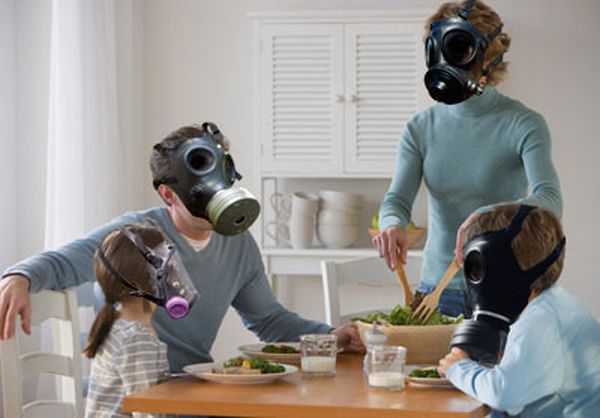Air pollution is everywhere, not just outside. Our homes, offices and schools bring us into contact with various kinds of toxic substances. According to the California Air Resources Board, many pollutants are accumulated indoors, resulting in high levels of pollution. Newer homes are said to be more prone to pollution because the tighter construction does not let particles escape easily. Such pollutants are harmful to our health and in some cases, can prove to be fatal. What we need to do is to find ways in which indoor air pollution can be reduced. Given below are five green ways to reduce pollution indoors.
1. Maintain fresh and clean floors
Floors are a magnet for toxic particles from outside. Most dirt particles and allergens settle on the floor and may not be visible to the eye. By getting rid of them, you’ll be able to remove a big part of indoor pollutants.
Use different methods to clean floors. Suck the dirt, mop the floor or even use large door mats to keep dirt outside. Use a good HEPA vacuum cleaner that can suck out allergens and chemicals like fire-retardants, pet dander, pollen and dust mites. Apply cleaners on floors, walls, carpets and upholstered furniture at least twice a week. Always use a mop to pick up any particles left behind by the cleaner. Make it a point to use plain water for best results.
2. Right level of humidity
Mold and dust mites love moisture. If you maintain the humidity of your home to around 30-50%, you’ll be able to check the level of allergens and other toxic substances. Use a dehumidifier to control moisture. Air conditioners are useful during the summer season and have been found to efficiently reduce pollen count indoors.
In order to dehumidify your home, try the following – use an exhaust fan while cooking or leave the windows wide open while using the dishwasher. Avoid overwatering your house plants. Use the clothes line outside. If there are leaky pipes, fix them to prevent mold growth and empty all your drip pans of the dehumidifier and window air conditioner.
3. Home is a ‘no smoking’ zone
One of the biggest contributors to indoor pollution is cigarettes. The smoke emitted contains over 4,000 different types of chemicals. Not to mention, research has found that secondhand smoke can be responsible for a child developing health problems like respiratory and ear infections, cancer, asthma and sudden infant death syndrome.
If you’re a smoker, quit and help others at home do the same. Take the help of support groups, medications and therapies or better yet find out information about Vaporizer Superstore Canada to give you an aid on how to give up smoking. There are now many effective methods that can help you get rid of the habit. If worse comes to worst and you can’t quit, then take the fags outside. You can try those vaporizers for sale (Go to this site to see the most advanced vaporizer in the market) nowadays since it’s becoming the trend now to start the path of quitting smoking tobacco.
4. Radon test
Radon is a gas that does not have any color or odor but increases the risk of lung cancer. Test your home – new or old – for the presence of radon. In the U.S., radon is the second leading cause of lung cancer. Note: Smoking in your home can increase the level of radon inside. This in turn increases the risk of lung cancer.
This radioactive gas is formed with the decay of uranium found in soil. It moves through the ground and through cracks to reach the interiors of homes.
5. Good smell inside
Pine or lemony scents usually help provide the sense of clean clothes and clean kitchens. However, the use of artificial fragrances in air fresheners, laundry products and cleaners emit a lot of chemicals and gases. A plug-in air freshener gives out some 20 different kinds of volatile organic compounds, some of which are toxic under Federal law.
Most of these scents are derived from petroleum products and have not been tested to see their effect on human health. But what you can do is to prevent or reduce the use of such items. Look for naturally scented or fragrance-free products and use mild cleaners that do not contain artificial fragrances. Avoid using hair sprays, deodorants, furniture polish, air fresheners and carpet cleaners. Ventilate your home properly. Keep doors and windows open so you can let in plenty of fresh air. To clean your kitchen, use baking soda or sliced lemon. Create a natural atmosphere by adding non-poisonous houseplants like spider plants, ferns and aloe vera as indoor plants are air purifiers.


